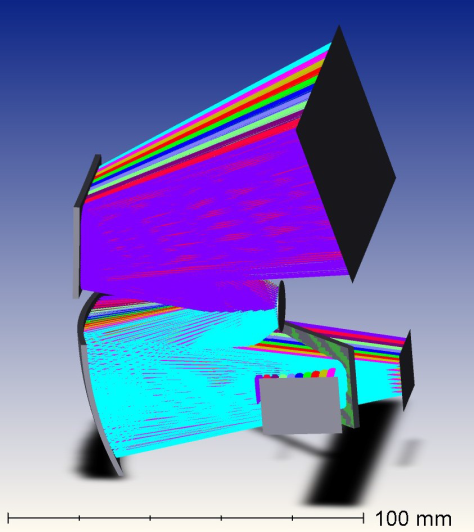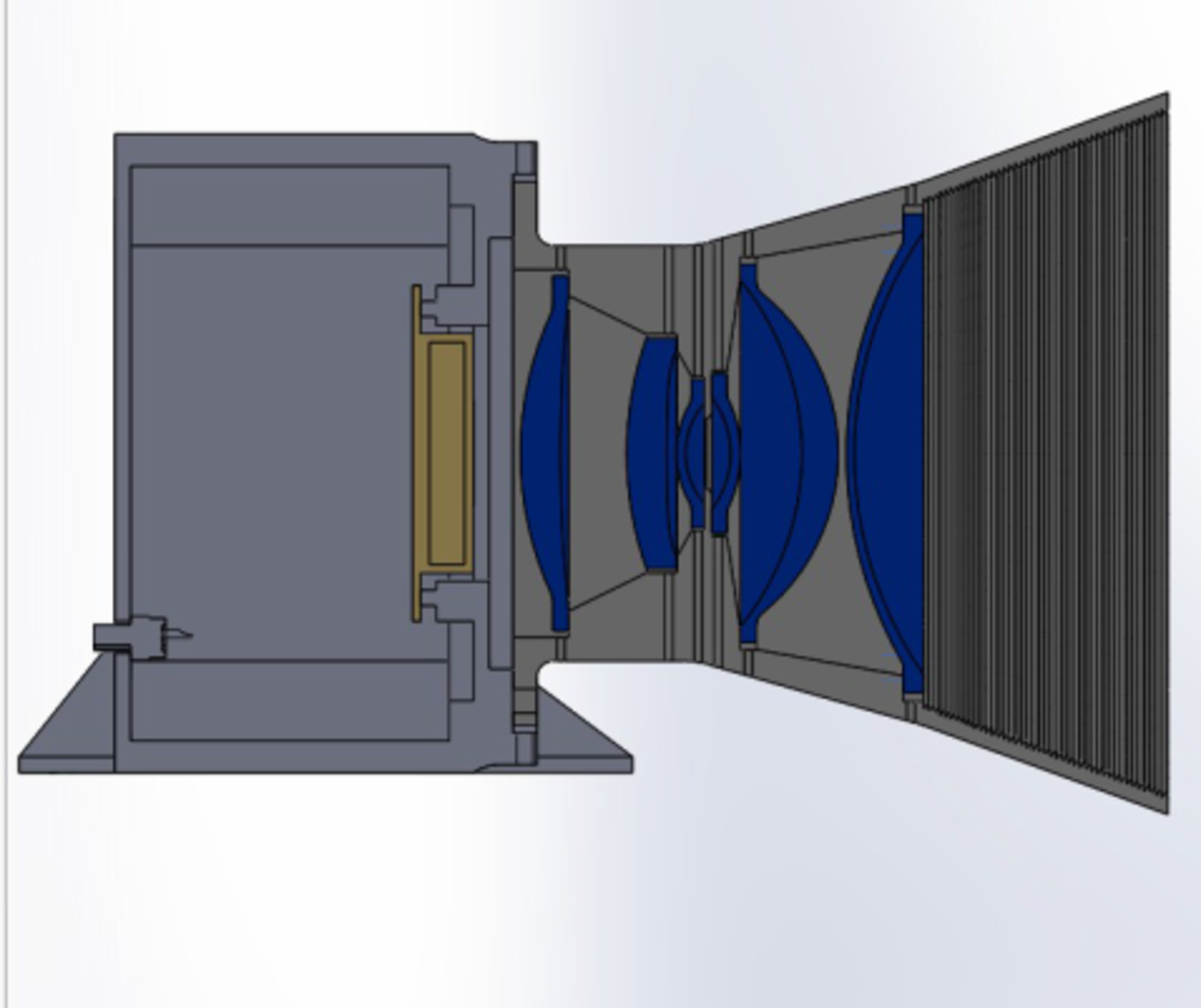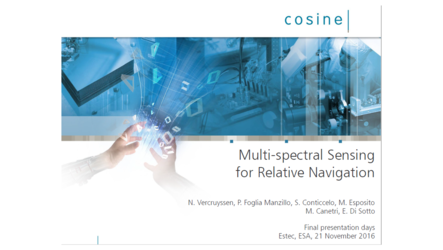Multispectral Sensing for Relative Navigation
| Programme: | TRP Workplan | Achieved TRL: | 3 |
| Reference: | T705-405EC | Closure: | 2016 |
| Contractor(s): | Cosine Research (NL), GMV (PT) | ||
The advantage of multispectral imaging over conventional single wavelengths imaging is that the spatial relationships among the different wavelengths sensed in a neighbourhood of the centroid of a target allow very accurate classification of the features of the image. Another advantage is that it is very robust to single wavelength shadowing and information gaps during the establishment of a navigation solution.

Objectives
- To make an assessment in a bottom-up approach, of the potential use of the combination of visible, IR, and UV wavelengths for navigation sensing. The most promising technologies shall be identified and their impact at system level shall be analyzed. To review existing space-qualified detectors technology which could be used for such purpose and their response in the identified spectral bands.
- To provide an architecture and a preliminary design of a Multispectral Sensing Device (MSD).
Achievements
Selection of a combined VNIR (visible and near infrared) and TIR (thermal infrared) solution. Focus on rendezvous applications (both cooperative and uncooperative).
Pictures
The above picture depicts the thermal infrared channel, more concrete the optics, lens barrel, baffle, detector and housing. The right picture shows the 3D optical layout of the modified HyperScout instrument that operates both in VNIR (Visual/Near Infrared) and TIR ranges.















 Germany
Germany
 Austria
Austria
 Belgium
Belgium
 Denmark
Denmark
 Spain
Spain
 Estonia
Estonia
 Finland
Finland
 France
France
 Greece
Greece
 Hungary
Hungary
 Ireland
Ireland
 Italy
Italy
 Luxembourg
Luxembourg
 Norway
Norway
 The Netherlands
The Netherlands
 Poland
Poland
 Portugal
Portugal
 Czechia
Czechia
 Romania
Romania
 United Kingdom
United Kingdom
 Slovenia
Slovenia
 Sweden
Sweden
 Switzerland
Switzerland




























